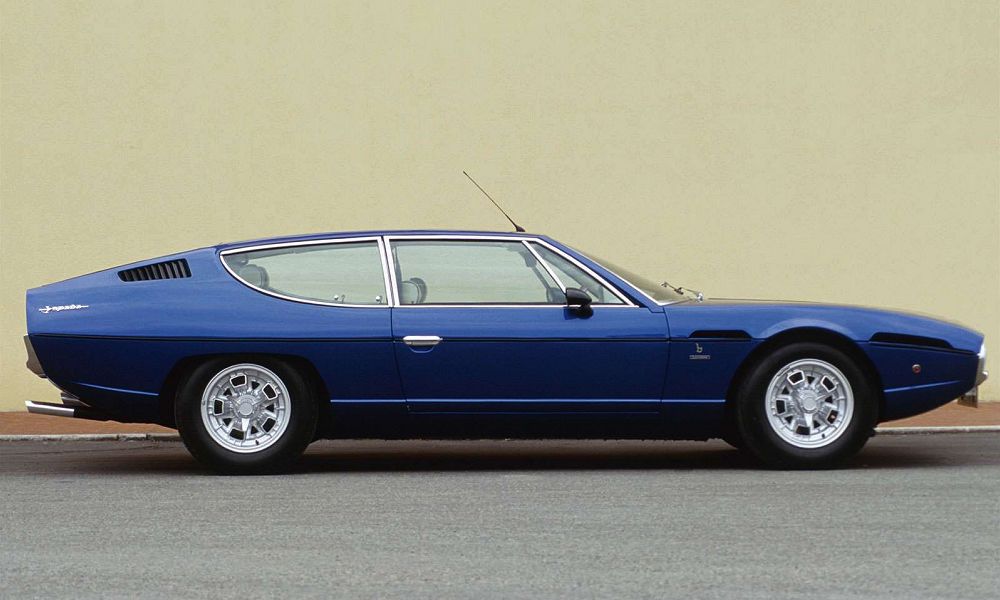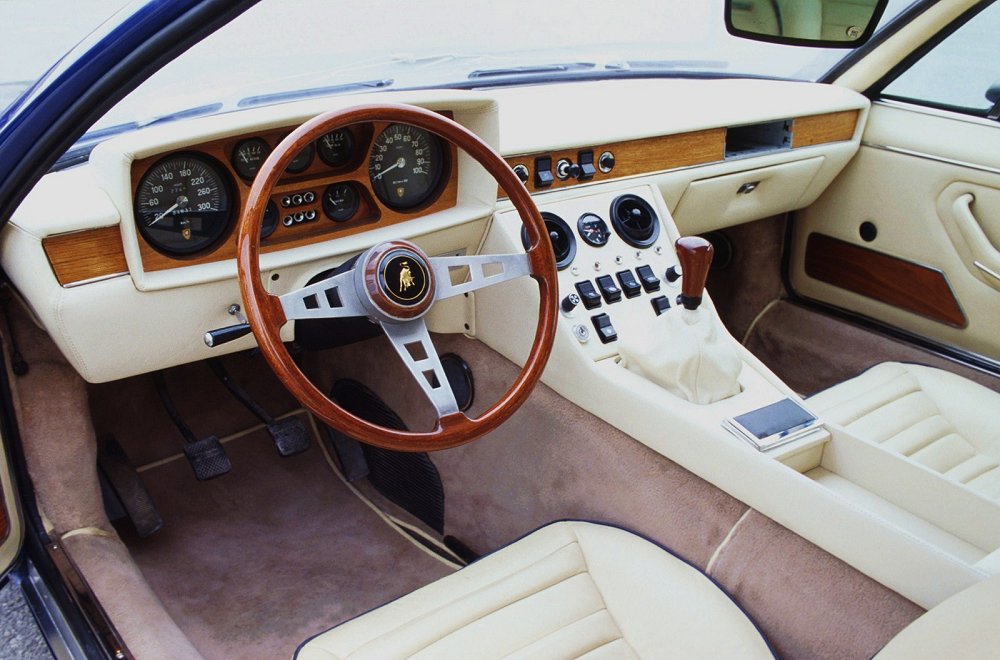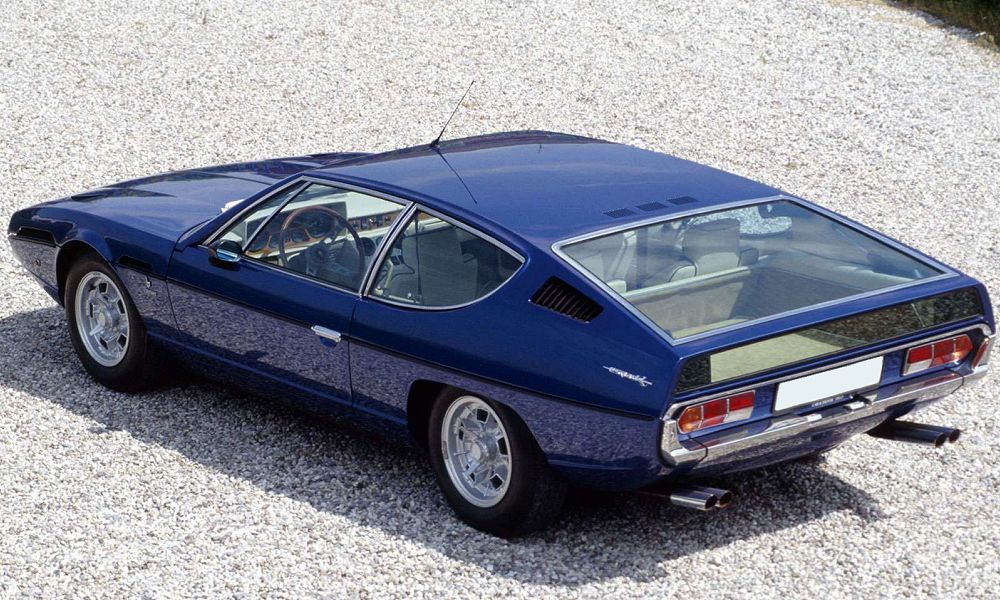Description
The Lamborghini Espada 400 GT Series II, introduced in 1970, marked the evolution of Lamborghini’s groundbreaking four-seat grand tourer into a more refined and powerful machine. Building on the foundation laid by the original Espada of 1968, the Series II brought improvements in performance, comfort, and design, making it one of the most complete and desirable grand touring cars of its era. With its bold, futuristic styling by Marcello Gandini and its glorious twelve-cylinder engine, the Espada Series II represented the perfect balance between speed, luxury, and usability.
The Espada had been conceived by Ferruccio Lamborghini as the ultimate expression of his vision for a true high-speed luxury GT. He wanted a car that could match the pace of his rivals’ sports cars yet comfortably accommodate four adults and their luggage. The result was a car that blended engineering brilliance with radical design—a low, wide, and elegant coupe unlike anything else on the road. The Series II refined that concept, adding sophistication without losing the Espada’s distinctive edge.
Mechanically, the Series II retained Lamborghini’s proven 3,929 cc all-aluminium V12 engine, designed by Giotto Bizzarrini and continually improved by Lamborghini’s own engineers. The engine used six twin-choke Weber 40 DCOE carburetors and four overhead camshafts, producing 350 horsepower at 7,500 rpm—an increase of 25 horsepower over the original Series I. Torque was also improved, giving the car even stronger mid-range acceleration. Power was sent to the rear wheels through Lamborghini’s five-speed manual gearbox and a Salisbury limited-slip differential. The result was breathtaking performance for such a large grand tourer: 0 to 100 km/h (62 mph) in about 6.2 seconds and a top speed of 250 km/h (155 mph).
The chassis remained a development of the one used in the earlier 400 GT, constructed from a robust tubular steel frame with fully independent suspension. The double wishbone setup, combined with coil springs and telescopic dampers, gave the Espada excellent balance between handling precision and ride comfort. The car’s wide track and low center of gravity provided stability at high speeds, while the four-wheel ventilated disc brakes ensured strong and consistent stopping power. The suspension and steering were both recalibrated for the Series II, improving ride quality and reducing steering effort without dulling feedback.
Visually, the Espada Series II received a number of subtle but effective updates that enhanced its modern, geometric form. Marcello Gandini’s original design for Bertone had been revolutionary, characterized by sharp lines, a long hood, and a nearly horizontal rear window that extended down into the tail. For the Series II, the front gained fixed headlamps behind glass covers, replacing the exposed lights of the Series I, while the taillights were revised to feature a cleaner, more contemporary look. The bodywork remained low and wide, with an unmistakable wedge profile that gave the car its futuristic presence.
The interior was where the most noticeable improvements took place. The Espada’s cabin had always been one of the most luxurious in Lamborghini’s lineup, but the Series II introduced a completely redesigned dashboard and higher-quality finishes. The hexagonal, space-age instrument layout of the first series was replaced by a more conventional yet elegant arrangement, improving ergonomics and readability. Rich Connolly leather covered the seats, door panels, and dashboard, while polished wood veneer and brushed metal accents added warmth and sophistication. Air conditioning, power windows, and optional radio equipment were standard features, ensuring that the Espada provided both comfort and performance in equal measure.
Driving the Espada 400 GT Series II was a uniquely rewarding experience. The V12 engine was smooth, tractable, and immensely powerful, capable of surging forward effortlessly in any gear. The gearbox was precise, the clutch surprisingly light, and the steering offered a satisfying balance of weight and feedback. At speed, the car felt unshakably stable, while the suspension absorbed imperfections with composure. Despite its size and luxury, the Espada handled with remarkable agility, thanks to its balanced weight distribution and rigid structure. It was a car that could cross entire countries in a single day, devouring highways with poise while offering the comfort of a luxury saloon.
Production of the Series II ran from 1970 to 1972, with approximately 575 examples built—making it the most numerous of the three Espada series. During this period, Lamborghini’s attention to craftsmanship and mechanical precision was at its peak, and each car was hand-finished to a standard that rivaled the finest European marques. The Series II also served as the basis for later development of the Series III, which introduced further refinements and the option of automatic transmission.
The Espada 400 GT Series II was perhaps the purest expression of Lamborghini’s original grand touring vision. It combined performance and practicality in a way few cars of its era could match, offering the exhilarating sound and feel of a V12 supercar with the comfort and usability of a true GT.
Today, the Espada Series II stands as one of the most admired grand tourers of the 1970s—a car that broke convention and proved that speed, space, and style could coexist in perfect harmony. Its striking design, mechanical sophistication, and enduring presence have earned it a special place in Lamborghini’s history as the car that defined the brand’s golden age of front-engined V12 engineering.



